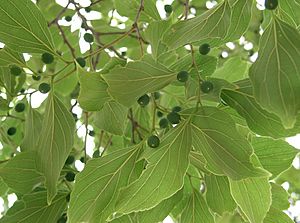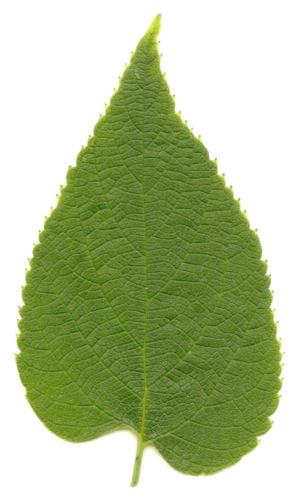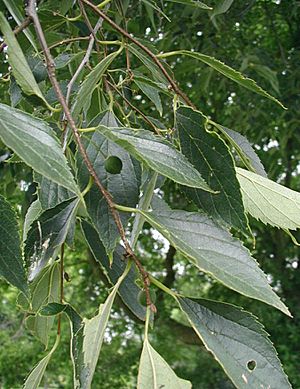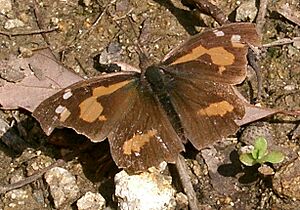Celtis facts for kids
Quick facts for kids Celtis |
|
|---|---|
 |
|
| Leaves and immature fruit of Chinese hackberry (C. sinensis) | |
| Scientific classification |
|
| Kingdom: | Plantae |
| Clade: | Tracheophytes |
| Clade: | Angiosperms |
| Clade: | Eudicots |
| Clade: | Rosids |
| Order: | Rosales |
| Family: | Cannabaceae |
| Genus: | Celtis L. |
| Species | |
|
About 60–70 species |
|
| Synonyms | |
|
|
Celtis is a genus of about 60–70 species of deciduous trees. They are commonly called hackberries. These trees grow in temperate regions of the Northern Hemisphere. You can find them in southern Europe, southern and eastern Asia, south to central Africa, southern and central North America, and northern and central South America.
Contents
What are Hackberry Trees?
Hackberry trees belong to the Celtis genus. They are known for losing their leaves in the autumn, which is why they are called deciduous trees. These trees are quite strong and can grow in many different places.
Where Hackberries Grow
Hackberry trees are found all over the world. They prefer places with moderate climates, not too hot and not too cold. This includes parts of Europe, Asia, Africa, and both North and South America. They are very adaptable and can grow in different types of soil.
Features of Hackberry Trees
Hackberry trees have unique features. Their leaves are often rough to the touch. The trees also produce small, round fruits that look like berries. These fruits are usually orange or dark purple when they are ripe. Many birds and other animals enjoy eating these fruits.
Hackberry Fruit and Wildlife
The small fruits of the hackberry tree are an important food source for wildlife. Birds like robins and cedar waxwings love to eat them. Mammals such as squirrels and raccoons also enjoy the sweet fruits. This makes hackberry trees important for local ecosystems.
Uses of Hackberry Trees
Hackberry trees are useful for many reasons. They are often planted in cities because they can handle pollution and tough growing conditions. Their strong wood is also used for different purposes.
Hackberries in Landscaping
Because they are tough and adaptable, hackberry trees are popular for planting in parks and along streets. They provide shade and add beauty to urban areas. They can also help prevent soil erosion with their strong root systems.
Wood from Hackberry Trees
The wood of hackberry trees is strong and durable. It is sometimes used for making furniture, fencing, or even for firewood. While not as common as some other woods, it is still valuable.
Hackberry and Insects
Some insects have a special relationship with hackberry trees. For example, the caterpillars of certain butterflies feed on the leaves of hackberry trees. This is a natural part of their life cycle.
Images for kids
-
Clusters of staminate (male) flowers of C. africana, with four tepals and four stamens each
See also
 In Spanish: Almez para niños
In Spanish: Almez para niños









